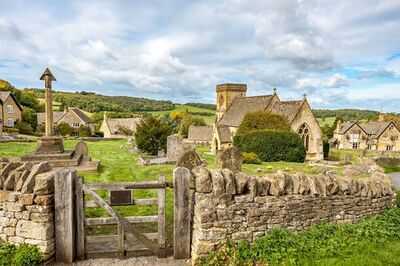Situated next to the Jurassic Coast, Exeter is linked to Lincoln in the northeast by the longest Roman road in Britain, the Fosse Way. Today, this ancient path passes through Shakespeare Country and Bath, and visitors enjoy exploring it and stopping off at nearby quaint towns.
The city itself is located on the wildlife-rich River Exe. Today, its rich history and unique charm can be felt through the cobbled streets, quayside pubs, and medieval buildings.
Visitors to the famous cathedral are impressed by its "incredible ceilings". Having visited on a "glorious Autumnal day", one Tripadvisor reviewer who enjoyed eating their lunch sitting on the green writes, "the 14 bells were ringing out for a whole hour, which was magical."
The "small city that packs a big punch" was once a major Roman town at one end of Britain's longest Roman road. Today, it is surrounded by stunning scenery, rolling hills, and miles of countryside. It is also home to unique Underground Passages, a renowned Gothic cathedral, and a rich cultural scene.
This ancient cathedral city in the heart of Devon easily deserves a spot on your bucket list. It's also said to be one of the foodie capitals of the South West.
Meanwhile, the Underground Passages tour guides visitors through medieval passages dating back to the 14th century. Built to bring water into the city, no such passages are open to the public elsewhere in Britain.
The attractive Quayside was once the site of the town's wool trade. Now, it is an ideal spot for cycling, canoeing, and kayaking, and there are many lively pubs and restaurants and antique shops to peruse. One visitor describes the quays as "reminiscent of a movie set."
Go South West names On the Waterfront, The Terrace, and Margoux as some of the top spots to enjoy cocktails, pizzas, and steaks. At the city's annual Autumn fair on October 14 and 15, the Cathedral offers a spread of artisan food, handmade crafts, jewellery, and ceramics.

Rougemont Castle, also known as Exeter Castle, stands at the highest part of the city. Once built by King Athelstan, it was destroyed by the Danes and rebuilt by William the Conqueror in 1068.
One popular route for those who fancy walking the Fosse Way is from the Cotswolds to Tetbury and then to Bath. The Cotswolds are said to have the highest density of Roman Villas in England. Those who wish to avoid major roads are advised to start at Tetbury and finish at Bath instead.
You may also like

Roy Keane's daughter launches business after being left bed-bound with incurable condition

3 herbal drinks that are healthy and naturally help with sugar spikes: Check how to make them

Women's World Cup: Healy, Sutherland Masterclass Helps Australia Rule Over India

From 578 AD to 2025: Lessons from 1,000+ year-old Japanese companies that defied wars, disasters, and modernisation

BSF foils cross-border smuggling bids, recovers five drones and pistol






